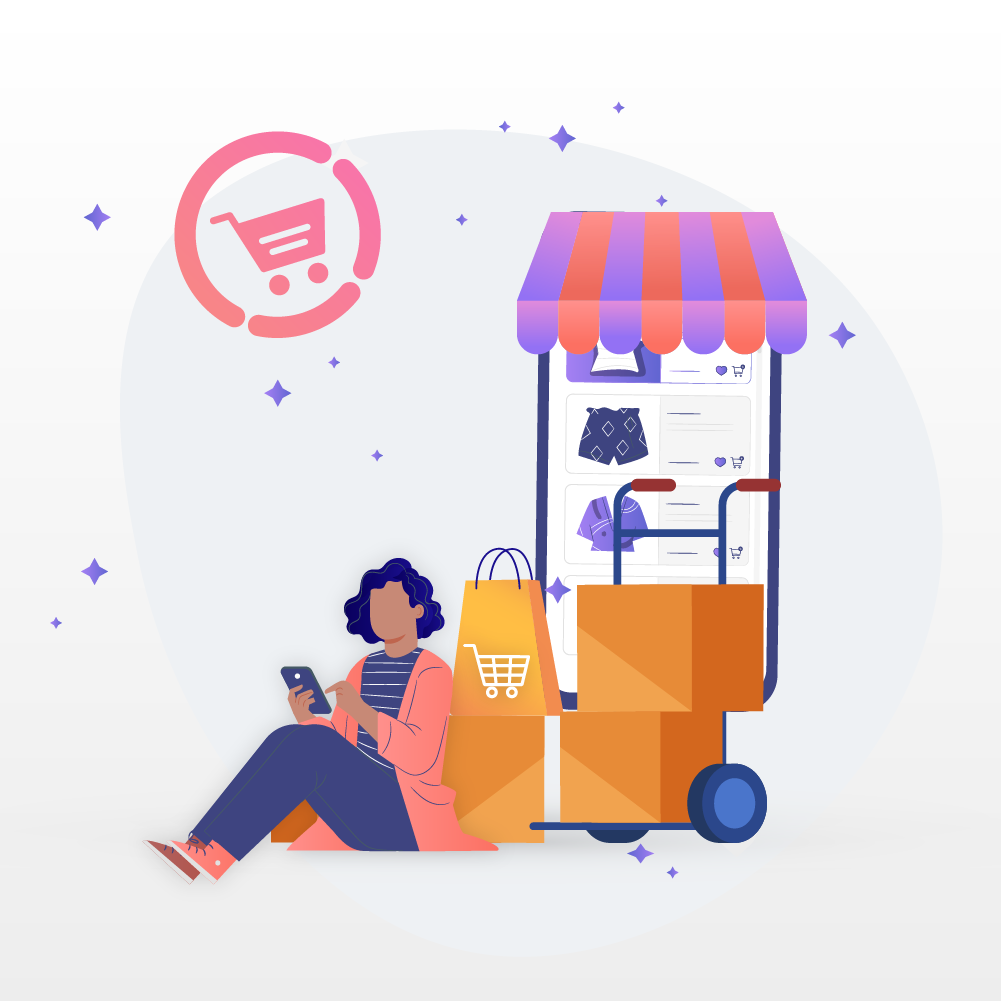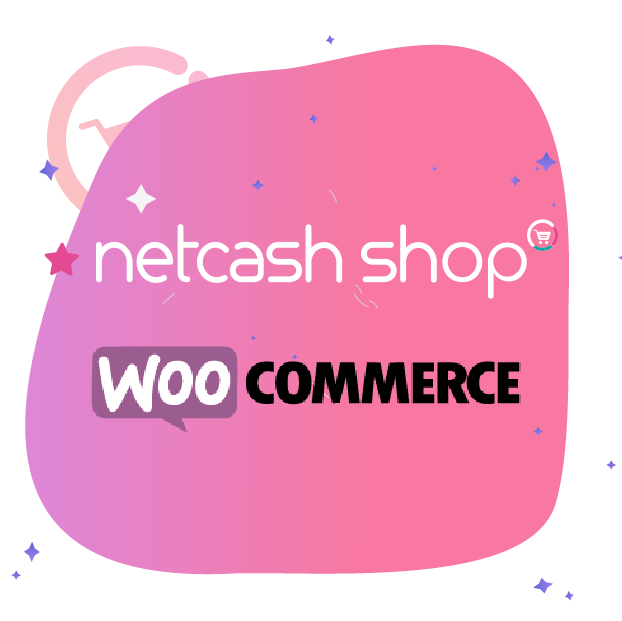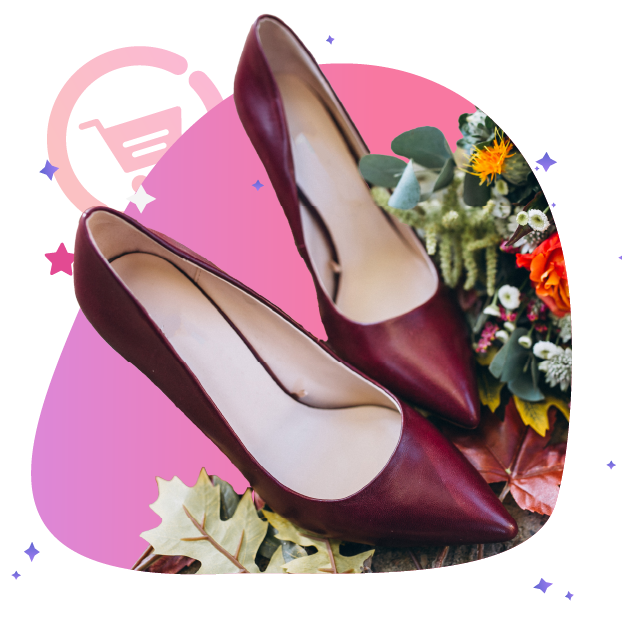A True Look at eCommerce Website Prices South Africa (2026)
March 29, 2023
Logistics for eCommerce 101 | Getting products to your customers
May 24, 2023Gone are the days when scoffing off your eCommerce product packaging as just another nice-to-have that did the trick. The recent boom and expansion of the online marketplace means the way you tackle eCommerce packaging and unboxing needs to keep up with new standards.
Not only does how your product is packaged impact the costs, but it also directly affects the needed approach for eCommerce logistics. Naturally, you don’t want to fall prey to what often happens to business owners—underestimating the value of innovative, effective, and unique end-to-end eCommerce packaging solutions.
But breaking down the barriers between what works and what doesn’t should be as simple (and enjoyable) as a YouTube unboxing tutorial. Luckily with rapid expansion comes swift innovation, and in an always-connected society, worthwhile techniques and ideas wait around every corner.
Now, let’s unpack all that goes into eCommerce packaging and how you can maximise its effects on your entire business—beyond just a pretty-looking box.
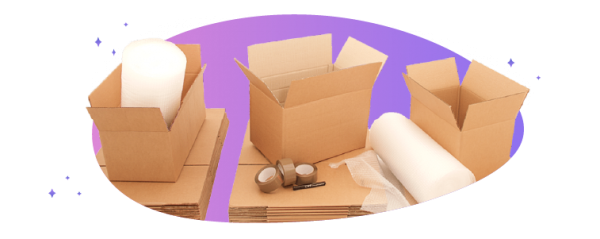
Index
- Defining eCommerce product packaging
- Understanding the importance of packaging
- Getting a grip on your packaging costs and shipping costs
- The ultimate eCommerce packaging breakdown
Defining eCommerce product packaging
Before diving headfirst into all the nitty-gritty of this subject, you first need to define “what is eCommerce packaging?”.
It’s not unusual to believe that product packaging is as simple as finding the right box to transport your product from point A to point B. After all, packaging plays a massive role in shipping and pickup.
If your focus is on eCommerce for retail, packaging simply comes down to the type of package you choose to use when shipping to clients. For example, let’s say you’re in the clothing and footwear industry. You wouldn’t be using the same type of packaging that a food delivery service or fragile goods seller uses. This is why it’s crucial to define your own packaging needs.
But, more than that, it also translates to finer elements, including the outer container, infill material, and other potential package inserts specific to your brand. Consider this: as impressive as your product might be, it’s worth very little if it doesn’t reach its destination in one piece.
Add an extra thought-provoking element to that—should it arrive in one piece, your product packaging is the first interaction your customer has after they check out on your website.
You tick several boxes simultaneously with the correct packaging design, material, dedicated purpose, and artistic flair. eCommerce packaging, then, is about so much more than just boxing.
It’s about security, brand identity, customer satisfaction, and being a significant player in your cost-profit margin. All that sounds well and good. However, first things first—you need to understand the various types of packages your eCommerce business can utilise.
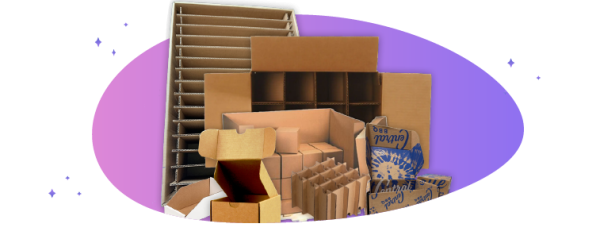
Different types of product packaging
While you can take a vastly diverse approach to individual package construction and design, some industry standards are considered staples for a reason. Remember your product type, size, and shape.
Here’s a rundown of what you should know about the ideal packaging options that are most popular for safely transporting your goods from cart to customer:
-
Box packaging
The most commonly used packaging type by retailers, the good old classic box packaging, is understandably a favourite option. Considering their sturdiness, durability, and recyclable nature, it’s no surprise that eCommerce packaging boxes reign supreme for most product types.
If you’re thinking about knowing the ins and outs of eCommerce boxes, remember they’re considerably cost-effective above all else. Let’s take a closer look at your boxing choices:
- Rigid Boxes – These are sometimes called “set-up boxes” with a fair level of sturdiness and a low likelihood of collapse. These are ideal options for high-end products, especially where the customer’s perceived value is high. You can also consider using rigid boxes when you need to ship or package a heavy item that needs extra support.
- Corrugated Boxes – Aside from this naming convention, you might recognise boxes of this type as either corrugated board boxes, fiberboard, or combined board boxes. These are typical brown cardboard boxes, but their design makes them distinct. Three-layered, with two flat outer layers and one waved layer, corrugated boxes make up the majority of shipping boxes.
- Double Wall Boxes – Considered quite similar to corrugated boxes, these feature a double layer of corrugated walls. This means your product never touches the bottom or sides of the box itself. Their increased rigidity and durability make them popular for eCommerce packaging, as couriers and delivery services prefer their use.
Of course, this isn’t an extensive list of box packaging. Other varieties include:
- Bulk Cargo Boxes
- Easy-Fold Mailers
- Edge Crush Test (ECT) Lightweight Boxes
- Multi-depth Boxes
- Storage File Boxes
- Moving Boxes (of varying sizes)
- Side Loaders
- Haz Mat Boxing (specific needs packaging)
- Wine Shipping Boxes
- Insulated Shipping Boxes
- Wooden Crates
Note: When deciding which boxing type to use, consider the fragility of your product. If it is very fragile, you might need to overbox it—the practice of fitting a smaller box within a more durable container that holds individual products.
-
Padded mailers
Next, you have padded mailers, which are ideally used for packing products that need moderate protection. These are often called “padded envelopes” or “cushioned mailers.” Their construction consists of thick paper of varying types lined with protective padding along the interior.
Usually, these are not large in size, and you’d consider them if you’re shipping small or flat items that aren’t overly fragile. Opt for padded mailers if you’re selling or shipping any of the following products:
- Small to medium-sized personal accessories
- Low to medium-value jewellery
- Durable electronics
- Books of varying sizes
Note: An advantage of using padded mailers is that you can include extra protection in the form of recyclable paper or bubble wrap placed on the inside. This impacts packaging sustainability.
-
Package bags and envelopes
Thirdly, you have package bags and envelopes favoured for shipping and packaging items that are lightweight and as close to unbreakable as possible. These are often poly mailers, paper envelopes, or plastic mailing bags.
Unlike other packaging types, plastic bags only provide a limited amount of protection against scratches, smudging, and visual blemishes. In years past, paper mailers were the prime choice in this category, but plastic bagging has taken over thanks to its ultra-lightweight, tear-resistant, and waterproof properties.
However, plastic is not ideal for environment-friendly packaging, and new innovations such as kraft paper and compostable mailers have emerged as alternatives.
-
Custom packaging
Sometimes basic packaging just doesn’t cut it, and you might want to consider customising your product packaging. Not only does this mean that you create a distinct unboxing experience for your customers, but it also creates a sense of brand appreciation appeal that your competitors might not have.
If you’re considering using custom packaging, the landscape is quite broad in terms of how you go about things. You could look into gift wrapping, package-specific fonts, and unique box or bag types. This gives you a playground of customising options, and you can play around until you find what suits your brand best.

Understanding the importance of eCommerce packaging
Once you have a firm handle on the types of packages, you might question their importance. Sure, they’re an essential aspect of product safety and, in turn, customer satisfaction, but does their relevance end there?
The short answer is no. eCommerce packaging fulfils quite a significant role in your business, and recognising its importance early on is one of the best ways to ensure continued success.
Beyond that, when you plan out your packaging needs and expectations down to the finest detail, you relieve yourself of a lot of potential stress.
So let’s take a closer look at some of the crucial consideration points you should have in the back of your mind when placing your bets on product packaging.
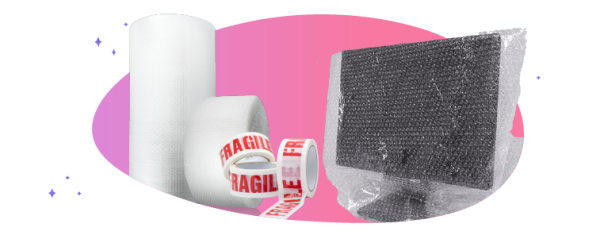
Packaging and product safety
As apparent as safety and its relationship to proper packaging might be, some pieces of information often slip by unnoticed. Yes, the bottom line stays true—from a functional standpoint, the sole purpose of packaging is to ensure the safety of your products.
This is not just contained to product protection while in the hands of couriers or delivery services. Choosing the correct product packaging from a safety perspective means considering your product’s entire journey from production to delivery.
Compared to brick-and-mortar businesses, eCommerce packaging is similar but not exactly the same in every aspect, especially when it comes to packaging and transport safety. eCommerce packaging includes a varied transit journey, moving from manufacturer or supplier to fulfilment centres and from there either to distribution centres or via courier services to the customer.
This means that the regular logistics chain from the manufacturer to a physical storefront features at least one fewer product handoff. Your products, however, have to change hands a few times before they reach their end destination.
When evaluating your product packaging, the benefits of spending more money on often costly eCommerce packaging material mean you go the extra mile to ensure it arrives intact. It doesn’t end with just the exterior packaging, either.
You have to decide how to seal your product, and this spills into aspects such as what kind of packing tape you’ll use. It’s also not unusual to consider speciality locks or tamper-proof seals.

Sustainability in product packaging
One of the most significant trends in eCommerce packaging is the shift towards eco-friendly materials. As people’s environmental concerns grow, more consumers are choosing brands that demonstrate a commitment to sustainability.
To meet this demand, many eCommerce businesses are adopting biodegradable, compostable, or recyclable packaging, and you should as well.
Here are some of the best options for eco-friendly packaging for online businesses:
- Compostable Materials: Companies like Noissue offer compostable mailers, tissue papers, and stickers, allowing businesses to reduce their carbon footprint. These materials naturally break down, making them an ideal choice for eco-conscious brands.
- Recyclable and Reusable Packaging: A growing trend is the use of recycled paper and cardboard for packaging. Materials like corrugated cardboard are lightweight, durable, and recyclable, making them a popular choice among eCommerce brands looking to reduce waste.
- Minimalism and Zero Waste: This movement focuses on reducing packaging to the absolute minimum necessary, therefore reducing waste and shipping costs. It also involves avoiding unnecessary plastic fillers or excess packaging materials.
How eCommerce packaging affects your brand reputation
To unwrap how you can effectively use eCommerce packaging to your advantage, it’s a fantastic idea to begin at the end. That is, the end destination, but the initial customer interaction. After the successful delivery of your eCom product, your customer now has their item. However, before they get their hands on what they ordered, they get their hands on its packaging.
While it’s true that the first step for customers of any eCommerce business is to shop with their eyes, once they have their shipped product, it comes into play. Understanding that you can increase the overall customer experience by tweaking your packaging is a massive realisation.
An increase in customer experience value directly translates into an improvement in brand reputation. If your packaging is damaged or unappealing, customers may find fault with your entire business.
Word of mouth is still a powerful marketing tool, and if your efforts in eCommerce marketing are to pay off, investing in a lasting packaging experience is a must. Customers rave about products that exceed their expectations, but these days, a good word about a unique or impressive product package also goes a long way.
Use personalisation and custom branding to build brand reputation
Today’s consumers are more inclined to shop from brands that offer personalised experiences, and packaging is an effective way to offer them exactly that. Take a look at these options for custom branding that can improve customers’ overall experience and your brand reputation:
Branded Packaging — Custom eCom boxes, tape, or tissue paper with your logo can reinforce brand identity and make a great impression. A study by Dotcom Distribution found that 26% of consumers are more likely to share pictures of branded packaging on their social media, leading to free marketing for your business.
Personalised Messages — A small personalised note can significantly improve customer retention. Even pre-printed “thank you” messages, loyalty vouchers, or discount coupons inside packages give an added layer of customer engagement and loyalty-building.
Augmented Reality (AR) Packaging — While it’s relatively a new trend, brands are starting to explore the integration of AR with their packaging. When customers scan QR codes on the package, they are directed to a unique AR experience, which could include interactive games, information about the product, or behind-the-scenes content. AR packaging offers an exciting way to engage customers post-purchase and is quite popular in the beauty and tech industries.
But, while your brand reputation depends on various factors, paying close attention to something as simple as packaging can make or break your customer relations.

eCommerce packaging and customer relations
You never get a second chance at a first impression, which is a crucial point to ponder when considering your product packaging. After researching and deciding on the safest type of packaging, you need to consider the impression it makes.
Be careful not to fall into the idea that customer appeal doesn’t apply to eCommerce packaging. Although your goods aren’t in a storefront, consumers do gravitate towards goods that come in unique, sleek, and well-crafted packaging, regardless of whether they buy online or in-store.
Taking it a step further, what impression do you want your package design to have? This is where you can include a personal touch distinct to your business. If you utilise features that elevate your unboxing experience, you cement an unspoken bond between you and your customers the moment they begin to unpack.
Imagine the unboxing of your package to mimic the same joy and excitement as is present with receiving gifts. How you include attention to detail in this entire experience can be done in many ways, including:
- Using and inserting colourful tissue paper
- Including a personalised note or disclaimer
- Gifting your customer with a discount coupon or upsell offers
- Adding a potential extra gift at no additional cost to the customer
- Making use of branded tape or fashionable product ribbons
- Branded packaging with item-specific logos or artwork
Beyond a wowing unboxing effect, remember that this process should also be seamless and easy to accomplish. No one wants to put more effort into getting an item out of its packaging than necessary, and this plays a role in the entire event you wish to create during unboxing.
Former Procter & Gamble (P&G) CEO Alan G. Lafley defined a simple concept with massive influence when he introduced the idea that understanding how customers experience packaging is no longer optional; it’s indispensable.
Use unboxing and social media integration to build customer relationships
Social media has turned unboxing into a marketing phenomenon. Brands are now leveraging this by designing packaging that encourages users to share their experiences online. Use the following tips to take advantage of this growing trend in eCommerce packaging:
- Social Media Callouts: Using hashtags, handles, or QR codes that link directly to your brand’s social media accounts within packaging designs has become popular. Not only does this invite consumers to share their unboxing experience, but it also drives traffic to your business’ digital platforms.
- Influencer Partnerships: Many brands partner with influencers who have a large following, providing them with customised packaging that enhances the unboxing appeal. This has been particularly effective for beauty, fashion, and tech brands.
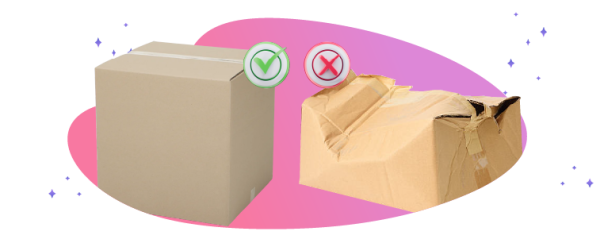
Proper packaging increases differentiation
Thankfully, modern packaging, especially eCommerce packaging, does not have to be dull, brown, or boring. You don’t have to look very far to find perfect examples of how companies in the same industry differentiate themselves from their competition through packaging.
Take, for example, the global cosmetics industry. It’s a dog-eat-dog world, so when brands want to snag the majority of customer traffic, turning to packaging is a great solution. The worldwide brand Sephora, which offers both an online and in-store offering, emblazons its packaging with the brand name in its signature black-and-white striping.
This doesn’t sound like a big deal but paired with the brand reputation Sephora already has, the unboxing experience it has created, and iconic differentiation equals a winning formula. On the other hand, what about small-scale eCommerce businesses? Creating a brand reputation from scratch is directly linked to how well you differentiate yourself from competitors you may have.
If you don’t have the funds to invest in over-the-top branding, there are other ways you can use packaging to create a unique impression. The company Unwrapped Life defies the usual grand-scale flair with minimalism, a close-to-zero aim for waste, and ultra-high sustainability.
How do they do this? Compostable paper, no packaging slips, and a standard font. It’s simple, clean, and does the trick of separating them from the rest.
Use packaging technologies and innovations to stand out
Technological advancements are changing how eCommerce businesses approach packaging, and you should start taking notes for your own establishment. Here are some new trends in packaging that can elevate your eCommerce business’ distinctness in this digital age:
- Smart Packaging: Equipped with sensors or QR codes, smart packaging offers additional functionalities, such as tracking temperature (ideal for perishable goods), verifying authenticity (for luxury or pharmaceutical goods), or even alerting the recipient to package tampering if it occurs.
- Tamper-Evident Packaging: With the rise of online shopping, securing packages during shipping is crucial. More businesses are adopting tamper-evident tape, seals, and boxes to ensure customers receive their goods intact and uncompromised.
- 3D Printing for Customisation: Some eCommerce businesses are experimenting with 3D-printed packaging. This innovation allows brands to create highly customised and intricate designs tailored to the product, reducing material waste and optimising the fit.
Subscription box packaging for eCommerce businesses
Since we’re on the topic of technology and innovation, the rise of subscription-based businesses is driving changes in how eCommerce packaging is designed. Many online businesses use subscription-based models to deliver products or services to their customers.
These kinds of business models work well with a lot of industries, from beauty and cosmetics, to food, health, entertainment, and most commonly streaming services. By using this model you can secure frequent payments (also known as retailers), which help with managing cash flow.
Here are a couple of subscription-based models for eCommerce packaging:
Monthly Unboxing Experiences — Subscription box businesses have made the unboxing experience an integral part of a marketing strategy. Packaging in the eCommerce industry focuses not only on protecting products but also on creating a memorable and Instagram-worthy unboxing experience every month.
Tiered Packaging — For subscription models, brands often offer tiered packaging levels that correspond to the level of subscription, ensuring that premium customers receive higher-end packaging, which adds to the luxury feel of the product. Using this kind of model incentivises your customers to stay loyal and keep coming back for specialised eCommerce products.

Getting a grip on your packaging and shipping costs
Speaking of funds. It’s about time the discussion around packaging for products and costs comes up. As with most things in the world of product selling, figuring out the impact of package costs on your entire business is a necessity.
The first consideration is whether you’re going to aim for stock-standard packaging to help save some money and level out your profit/affordability margin. While it’s not that impactful to head this route—from the customer’s perspective—it will benefit your company purse.
On the other hand, if you’re opting for customised packaging, you need to factor in the estimated costs that these elements will add to your price per package. If you want to include custom infills, perhaps use colour branding on the exterior or add additional things like wrapping paper; this increases your expenses.
Now, both of those options already come with costs, and after you decide which route to take, the next thing you need to consider is product-specific shipping rates. Size and weight play significant roles here, and the larger or heavier your product can increase these costs.
That would make it logical to choose the most compact and lightweight packaging possible (but keep your customisation concepts in mind). However, an extra player is present as well. It’s not your friend, but knowing how weight pricing adds to your packaging costs is essential.
Known more commonly as dimensional weight pricing, this concept was introduced in 2015. It moved shipping costs away from weight and focused more on the amount of space your product takes up in courier vehicles. So, instead of determining how much you’ll pay based solely on weight, you must also consider proportions.That being said, each transit method involves its little recipe for calculating your package shipment cost. Having your product options and variations shipped using ocean freight won’t cost you the same as air freight shipping or road freight.

Take a closer look at how each of these product shipping methods works:
Ocean freight shipping
If you’re shipping products using ocean freight, most agents will calculate the weight of your cargo along with its cubic volume. After that, they will compare the result based on a conversion scale where 1 CBM (cubic centimetres) equals 1000 kgs. The greater of the two will then be multiplied by the shipping agent’s rate per kg.
Example: You’re shipping cargo that weighs 200 kg. Its cubic volume (length x width x height) comes out to 1.44 CBM. Converting it to a number out of 1000, your cargo weighs 0.200 kgs. With 1.44 CBM being greater than 0.200, your shipping agent will use your cubic volume multiplied by its freight charge to determine the final costs.
Road freight shipping
Quite similar to ocean freight, the greater between your actual weight or volumetric weight to calculate costs. A difference is that road agents use a general multiplier for volumetric weight, usually 333 kgs.
Example: You’re sending cargo that weighs 400 kg and has a cubic volume of 0.769 CBM. Agents will multiply 0.769 by 333 kg, which will equal 256 kg. Considering 400 kg is higher than 256 kg, they will then use the actual weight to determine costs on their unique scale of charges.
Air freight shipping
Also similar to the other two shipping options you have, air freight also uses weight and volume, but a standard dividing factor is used. This will then be multiplied by the shipment charge your air agent prescribes.
Example: Your cargo weighs 0.4kg and has a cubic volume of 12000 CBM. This 12000 CBM is then divided by 6000 to get a result of 2 kg as the volume weight of your item. With the volume weight greater than the actual weight, your cost is calculated using 2 kg multiplied by the carrier’s rate per kg.
Note: Some air freight carriers use a divider of 5000 instead of 6000, so check this out before planning your budget and choosing a partnered carrier.
The role of packaging in reducing shipping costs
In the eCommerce industry, shipping costs can account for a significant portion of overall expenses, especially if your business ships internationally. Packaging plays a crucial role in minimising these costs. Be sure to consider the following when choosing your packaging type:
Right-Sized Packaging — One common mistake in eCommerce is using packaging that is too large for the product, leading to increased shipping costs and wasted materials. Opt for solutions like on-demand custom-sized packaging, allowing you to use the exact amount of material needed. This not only reduces costs but also aligns with sustainability goals by minimising wasted space and fillers.
Lightweight Materials — Switching to lightweight packaging materials, like poly mailers or air pillows, can also lower shipping costs. Air pillows, for instance, provide the necessary cushioning while being lighter than traditional paper or foam inserts, reducing the overall shipping weight.

eCommerce packaging tips
There’s no hiding that when you plot out your packaging, there are so many things to consider that it seems like a daunting challenge. So why not simplify it as much as possible with these handy criteria tips?
- Always choose packaging that fits your product: Aim for packaging that’s as tight as possible. This will help reduce weight without compromising any product integrity and, in turn, decrease shipping and material costs.
- Swap out rigid packaging with flexible alternatives: As great as they are, eCom boxes or packaging made with hard or coarse materials often add unneeded weight. So, sometimes it’s better to go for flexible packaging.
- Aim for environmentally-friendly void fillers: Sure, packing peanuts have been around for ages, but these days eco-conscious consumers prefer you to be environmentally friendly. For example, play around with void fillers made from bamboo or wheat straw.
- Be wise when choosing packing tape: Yes, you should opt for the most robust and most durable tape for your packaging, but see the often overlooked potential. You can use tape to advertise or create a brand reputation as well.

Your easy step-by-step packaging guide
Time to get your hands dirty. Okay, maybe not dirty, but if you’re stuck between a box and a hard place, let’s dive into a quick and easy packaging process guide.
Step 1: Determine your needs
Begin with the basics. Understand your packaging needs, and if you’re unsure, consider criteria such as:
- What types of packaging do your products need?
- Can you apply any innovations?
- What would be your package dimensions?
- How many packaging units do you need?
Step 2: Consider your budget
When establishing your budget for packaging, remember that two types of expenses are involved in eCommerce packages.
- Visible costs – Things like upfront design costs and package pricing.
- Hidden costs – Here, you should consider infill prices and the potential for breakage.
Beyond that, your budget should include every bit of packaging supplies you’ll need and the more number-driven elements. This means considering product cost, profit margin, and estimated sales.
Step 3: Exterior design
Think about the visual exterior design features of your product packaging. You could go minimalistic or extravagant. Remember that certain elements are non-negotiable, such as having your logo visible and standing out. You should also include brand colour wherever possible and plausible.

Step 4: Interior design
While brick-and-mortar companies can rely on several things to wow their customers, you can accomplish the same with an exciting unboxing. This means paying attention to your packaging interior design. Use the inside of your box or bag to tell a story, create joy for your customers, and make it a moment worth sharing.
Step 5: Explore innovation
Combine your marketing strategy with your eCommerce packaging ideas. Decide how you can innovate so that your customers appreciate their received goods. There are many ways to do this, including QR codes on the interior and telling customers your business story.
Step 6: Decide on printing
Aside from cost factors, take your time to decide on printing options for any internal and external packaging needs. There are a few printing techniques you could consider, such as:
- Lithographic printing
- High-speed digital printing
- Flexography printing
Step 7: Consider the finer details
When it comes to the finer details of your packaging, once again, you’ve got a few things to keep in mind. Although not a complete list, here are some of the most worthwhile ones to consider:
- Do you need some sort of coating on your packaging? This could be matte lamination, gloss lamination, Aqueous (AQ) coating, UV coating, or even varnish.
- Does your package require special finishing? Here you can enhance the appeal of your packaging with touches like foil stamping, spot UV coating, embossing or debossing, or even adding small windows into the interior.
- Finalise a dieline. This template for your visual design is created digitally and then used by manufacturers to develop your physical structure.

Step 8: Create your prototype
Now that you’ve settled all of the above, the second last step is to create an initial prototype. This will confirm whether all your dimension calculations, interior and exterior design, and infill requirements are correct. If something is off, use your prototype to tweak things and have a second one made if needed.
Step 9: Finalise production and shipping
Finally, after everything is done, you can send off your packaging design and requirements to manufacturers or suppliers. Communicate timelines between your manufacturer and shipping agent. Then it’s all a waiting game until your product package units arrive after shipping.

Sourcing proper packaging for your eCommerce business
What about the sourcing of your packaging? As fantastic as designing and envisioning your packaging already done and dusted, where do you go to get what you need?
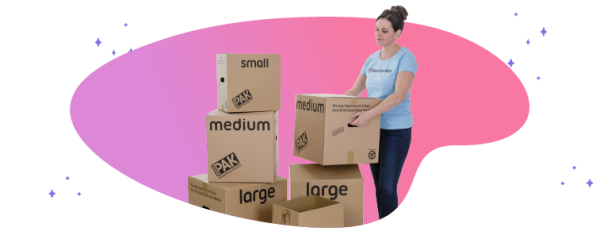
Here are a few great ways to source the packaging for your eCommerce business:
Local packaging solutions
If you’re not doing all of the packaging yourself (a bit more on that in a minute), as a local eCommerce business, you’ve got a few companies to help you along the way. Based on what you’re selling, here are some options:
- Constantia Afripack: Forms part of Constantia Flexibles. Choose them if you’re after the best in flexible packaging. They specialise in confectionery, soups, sauces, and High Performance Computing (HPC) industries. They provide custom packaging services.
- Nampak Divfood: Africa’s leading food packaging company, they offer metal, glass, paper, and plastic packaging. Their main product types for packaging include food and beverage, household and industrial goods, cosmetics, and toiletries.
- Moco Packaging CC: Solely focused on cosmetics and pharmaceutical products, Moco offers glass, plastic, and customisable solutions.
- Tropic Plastic & Packaging Industry: Your go-to for any plastic-related packaging needs. They offer a vast range of films and bags and a customisation service.
- Mpact Packaging: As the largest paper and plastics packaging and recycling company in South Africa, they offer the most extensive array of large-scale packaging options.
Do-it-yourself packaging solutions
If you’d rather have a hands-on packaging experience, you can do it yourself and use the following resources to ace your packaging game:
- Sourcing your packaging from the above eCommerce packaging companies or other smaller-scale businesses. There are some great options, such as MerryPak and Mondi.
- Local stores, such as PNA, offer everything you’ll need to customise and design individual packaging (great for brand reputation). PostNet is another stellar option for any packaging essentials.
- Certain courier companies offer branded packaging to relieve some stress. Finding what suits your needs, though, will require some individual research.

eCommerce Packaging: FAQs
Do you still have some questions lingering in the back of your mind? Here are some of the most commonly asked questions by business owners about packaging for eCommerce:
What is the difference between eCommerce packaging and retail packaging?
Size and durability are two key differences between eCommerce and retail packaging. The latter tends to be larger and eye-catching on store shelves, while eCommerce packaging is ideally small and compact, with the aim to reduce shipping costs. Durability comes into play at the shipping stage, eCommerce packaging must be durable in order to withstand the transit.
What are the trends in eCommerce packaging?
In recent years, trends like sustainability, innovation, and customisation have rapidly grown in eCommerce packaging. As mentioned above, customers now value eco-friendly packaging, eye-catching details, and a touch of branding for reputation building.
Who pays the cost of packaging?
The customer. As an eCommerce business owner, it’s your responsibility to factor in the cost of packaging (i.e., the design, materials, and production) into the product’s selling price.
Wrapping up packaging for eCommerce
To wrap things up on your eCommerce packaging journey (pun intended), it’s clear that it’s not as cut and paste as it seems. There’s a lot to mull over when you begin this adventure, but from choosing package types to designing, it’s a fun, integral part of your business.
But, as with most aspects of creating a successful eCommerce company, don’t forget that you can make packaging work for you. It doesn’t need to break the bank to make an impact, nor does it have to give you sleepless nights.
Candice Sergeant is an experienced eCommerce Product Owner at Netcash, driving the growth strategy for SaaS e-commerce solutions in South Africa with global partner Ecwid by Lightspeed. Candice is skilled at uncovering opportunities to optimize the online presence and operations of startups and medium businesses across a range of industries.

Subscribe to our mailing list to learn about our new features and marketing tips & tricks.
